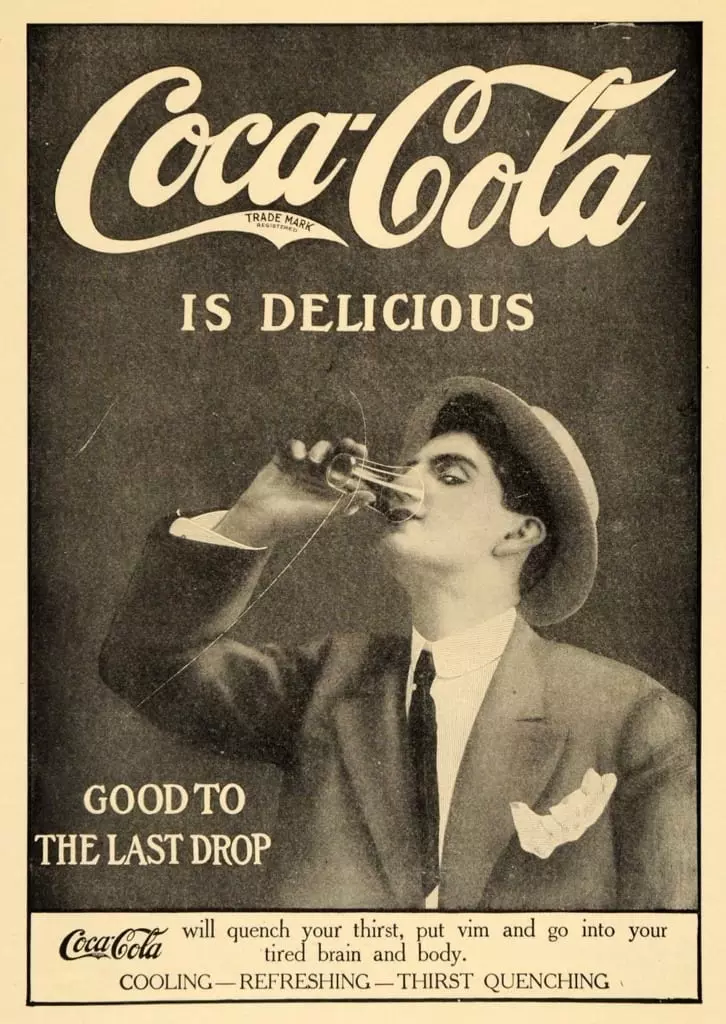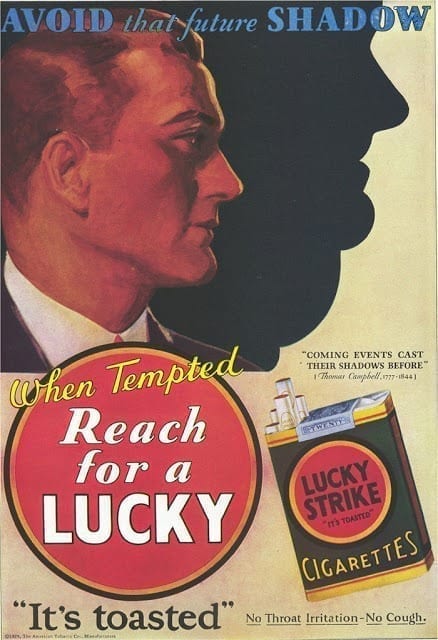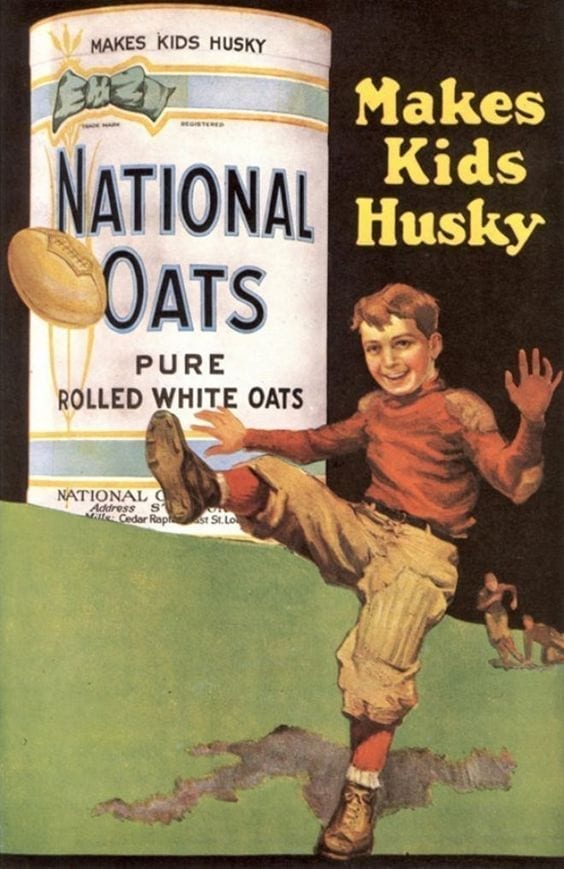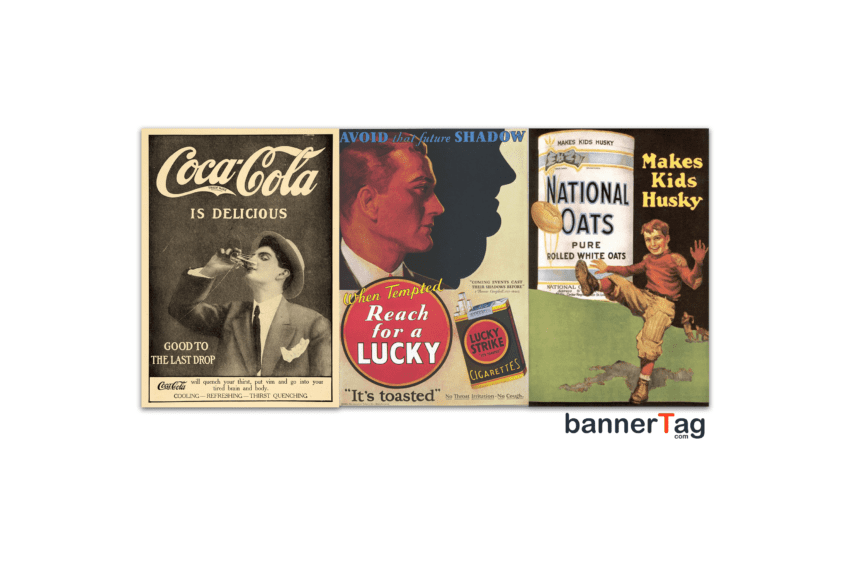Advertising in the 1920s had a big influence. However ads have long been in existence since the 1880s and went out of proportion after the construction of the transcontinental railways. For instance, it provided a kind of national market for consumer goods and also provide companies with an opportunity to expand their production size.
How It All Began
Towards the middle of 1890s advertising became more aggressive and persuasive. It went from mere announcing to the public. A way considered to be dull and dry to persuading consumers through various convincing means. Advertising in the 1920s was never considered effective until it produced “repeat customers”. Therefore creating a situation that helps to build brand loyalty for most companies. Brand loyalty can be exemplified when an old customer is convinced to still go for new products from the same company.
Print Technology
Before the First World War, there were changes in print technology. An activity that was motivated by what the McClure’s (a marketing journal). It was preferred to call it “the widespread”. Indictment of greed and corruption in politics and business.
Importantly those changes in print technology also encourage a missive dependence on print products by most advertisers, a situation that made publishers cut down their price from $0.35 to a nickel. Not just that, readership for most top magazines increased drastically from 10,000 to 500,000 readers. Then it started to decrease, probably because of the boring nature the magazine industry has begun taking during that period. According to research, the magazine industry needed a reform when it comes to advertising.
Advertising In Newspapers


Immediately after the first world war advertising on magazines dropped a bit. It picked up after a while, this time advertisers used more aggressive methods. For instance, using movie stars or popular figures to persuade customers to buy their products.
A typical example of how advertising has changed since the 1880s till 1920s is the Coca-Cola product, during the 1880s the product was advertised as a medicine claiming that is cures headache; that it revives and sustaining a man. But during the early 1920s, the company changed the product description to a portion of food and refreshment. Today, coke-cola is considered the biggest refreshment product on the face of the earth, thanks to a strategic advert campaign.
Advertisers Going Wild
Advertising in the 1920s took a new turn in 1925 a period that was said to be a plus in the lives of the 40% American workforce who were having a good moment at that period. An average worker as of then earned more than an estimated $2000 in a year. During this period the six working days were reduced to five, which means more money with less working days. With this analogy, advertisers took advantage of it to spend heavily on buying weekend advert placements on magazines and newspapers to present to that 40 % with what they have in stock, and what they think they need to buy.
The rise of Radio Advert
Though the radio was developed 25 years before the 1920s. It began gaining popularity in the 1920s, becoming the mass communication technology among the people. In the Netherlands, the first radio broadcast was transmitted in 1919 but commercial radio broadcasting gained dominance later that that year. In the United States, many factors contributed to the increase of adverts on all media sources. Those factors include wild economic fluctuations, too much concentration of corporate wealth, and economic depressions. Radio adverts received a boom during these times. For instance, radio listeners were considered hobbyists, as in an activity one can engage in while having their relaxed moments.
When Advertising Was Only For Elite


For advertisers, it is the right moment to act, hence the invasion of radio advert section by advertisers. In part because radios back then were considered a semi-luxury product. Which can only be afforded by the middle class as it was sold for $ 75. An amount not everybody is ready to spend on such product. So a specific product is usually being hard on the advert period of each programmed.
In 1922 there was an opposing against radio advertising with a reason that radio moment in a home is a family moment so, therefore, should not be interfered with using some product advert. The claim was made by a trade journal “Printers Ink” which claimed the “the family is not a public place” thus, the advert should be taken to the streets and not the family circle.
American Telephone & Telegraph Company
As radio broadcasting continues to experience a boom, one of the high moments of advertising in the 1920s was the establishment of American Telephone & Telegraph Company (WEAF) New York, a station established as a “toll station”. A toll model of radio broadcasting has to do with passing out information to the public; such information also includes advertising your products to the listening public.
Though the model suffered a bit set back at first. Later in the year the first commercial broadcast was aired featuring AT&T accounting practice. In August 192m the first company that ran their advert placement under the toll station model was Queensboro Corp. Which paid $50 for just 10 minutes promoting their apartments located in Queens, New York.
After the advert was aired, it lasted repeated four times. After which an extra 30 minutes were also purchased to be aired in the evening program. As a result of this several apartments were sold.
The Major Event In Advertising World
After this success, companies started trooping in en mass; those organizations include Tidewater Oil, RH Macy Department Store, Greeting Cards Association, Metropolitan Insurance co., National Surety Co., American Hard Rubber Co., and American Express. Later same year politicians and public office holders started using this platform to either promote themselves, pass valuable information, or advertise their products. This major event was actually what made the high moments of advertising in the 1920s. Though in later years the toll station method became the major revenue spinner for radio stations especially in the united states.
The origin of Advertising in 1920s
The origin of the practice can be traced back in the days when the practice of advertising was already flourishing. Therefore, yet to be seen as a priority. The whole thing started when some few businesses launched some kind of innovative programs. In what was then called “commercial research” which in later days was known as Marketing.
According to the story. A representative in one of the popular weekly magazine as at that time wasn’t happy with the way their advert space was being handled, probably because of the incompetence on the side of the salesman who did not know how to handle such task.
The Beginnings of Marketing
This led to the publisher hiring Charles Coolidge Parlin, a marketing expert to use a kind of social science method to study questions like what do customers want? And what will be the effectiveness of the advertisement? This was probably the first market research carried during that era. In 1916 the largest rubber industry in the United State, the U.S Rubber had to establish a market research department based on the success of Charles Coolidge research. In 1917, the need to establish a market research department by firms became a necessity. Those moves had also made major manufacturers to acquire a systematic knowledge of the market in which they operate. Thereby fashioning out the best-suited way to launch their next advert to drive home their message to their customers..
Monthly Payments In The 1920s?


Market was considered Oligopolistic in nature. Therefore, intensive marketing and advertising become paramount when price competition lessens.
A practical example of this is General Motors. They led other automobile industries to design an annual change in their advertising model following the kind of change seen in their environment. Also in the case of exploring new ways to advertise their products General Motors designed the development of customer Credit Model. The model brought about an evolution in the advertising industry. This model has more to do with paying for goods through monthly instalments. Instead of the usual onetime payment, a method that became very popular in the United State overtime. The company also went further to adjust the way adverts are being run through the creation of General Motors Acceptance Corporation. This happened sometime in 1919.
This corporation was set up to help prospective car owners finance their dream of owning a car. A trend that was emulated by ford Motors 10 years later. And by the beginning of 1929, purchasing through installment means accounted for 90% of products, some of those products include sewing machine and washing machine while the same model accounted for 80% of sales of products like radio, refrigerators, and vacuum cleaners. The same “purchase by installment” accounted for 60% of car sales in the United State.
To 5 conversion Techniques used in the 1920s
1. Try making it personal
According to Hopkin, to receive a gift is not enough motivation to encourage a customer such method is seen as being too common therefore some customers just deliberately tend to ignore it. Instead of giving out gifts all the time Hopkins suggests you send a letter to the customer encouraging them to claim a free product (it can be a free book, fruit basket, e.t.c) with their names embed on it. On experiencing this method, Hopkins found out that almost all the recipients of the letter responded by sending their information across. Today companies like Apple have adopted this method by have creating opportunities to customize your product which they have made their first on the checkout point. An individual can see their names on the Apple product they purchased, that way they will feel a sense of ownership of the product. Other companies that have abducted this method are Facebook and LinkedIn.
2. Try Limiting the Offer
One of the essences of advertising is turning the customers from prospective to actual customers. According to Hopkins, producers should try not to make the customers feel distracted. To do this they have to try and limit their offer to compel the potential clients to act now. One of the ways to do this is to reduce the expiry date of either the product or promo going on at that moment. This true because by letting people know they have just limited time to act that way they are easily motivated to act ASAP. Today company like Energy Comparison use the same technique to make their prospective clients act faster. They usually warn of an upcoming rise in price and encourage users to immediately port to lock in the new price rate.
3. Image
The “advertising 1920s boom” as it is commonly called has been traced to be successful mainly because of the imagery in the write-ups. According to Hopkins, a man who is into the sale of incubators should make efforts to have imagery that has striking pictures of that product he represents. Today, companies like Mr. Mead and Autoglass do test sale using hundreds of products on their online homepage hoping that one of the images pays off through its appealing picture display. The online gaming platform BulevurGames also testify that image testing can be convincing enough to make a customer download some of their games.
4. Be Specific with your Claims
In 1920s advertising became very important. One of the main reasons was because it made every producer claim that their product is: either of the best quality or they have the best price in the world.
Such proclamation is easy to make, according to Hopkins. All you need is to specify that unique point attribute of your product, leverage on it then grow with it. Today, companies like MoneySuperMarket do advertise their product using the quote “Five Minutes”.
That particular statement though simple, it leaves a strong message to the prospective customers. Therefore, letting them know that it takes just five minutes to send your money across no matter your geography.
Finally, advertising remains the core part of every industry and also a supplementary department to every marketing section of any company. Advertising brings in much more yield, when more attention is given.
Advertising has grown a lot since then and now we have sophisticated techniques such as Header Bidding. Ad size dimensions have been changing since then. Now there are only a few most popular desktop and mobile sizes that can be used by anyone.





